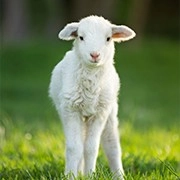Cooking Chemistry Secrets

Have you ever wondered why certain dishes instantly make your mouth water or why some flavors seem to dance on your tongue? The answer lies in chemistry!
Cooking is one of the most delicious applications of science in our daily lives. Today, Lykkers, let's explore how chemistry works behind the scenes in our kitchens—and how we can use this knowledge to make our meals even more delicious!
The Science of Taste
Let's start with the basics—our sense of taste. We mainly experience five basic tastes: sweet, sour, salty, bitter, and umami (a savory taste often found in broths, mushrooms, and aged cheeses).
Each of these tastes triggers specific receptors on our tongue. But that's only part of the story. Smell plays a huge role too. The aroma of a dish interacts with our sense of taste to create complex flavors. That's why food tastes bland when we have a stuffy nose.
According to Dr. Gary Beauchamp, a sensory scientist, “Flavor is a combination of taste, smell, and even texture—understanding this can help us cook better and enjoy food more."
Maillard Reaction: The Magic of Browning
One of the key chemical reactions that makes food taste great is the Maillard reaction. It happens when proteins and sugars in food are exposed to heat, producing new flavor compounds and a rich brown color.
Think of the golden crust on freshly baked bread, the sear on a meat cut, or the crispy edges of roasted vegetables. All of these delicious results are thanks to the Maillard reaction.
To achieve the best browning, we should cook food at the right temperature and avoid overcrowding the pan (which causes steaming instead of browning). A little patience can go a long way in developing deep, satisfying flavors.
Caramelization: Sweet Chemistry
If you love the rich flavor of caramel, roasted sweet potatoes, or onions cooked until golden, you've tasted the wonders of caramelization. This reaction happens when sugars are heated and break down into new flavorful compounds.
Caramelization starts at about 320°F (160°C). Different sugars caramelize in different ways, which is why honey-roasted nuts, caramel sauce, and roasted veggies each have their own unique flavor.
Mastering caramelization can add layers of sweetness and complexity to both savory and sweet dishes.
The Role of Acidity
Acidity brings brightness and balance to food. It can cut through richness, enhance other flavors, and add a refreshing element to a dish.
Common acidic ingredients include:
• Lemon juice
• Vinegar
• Tomatoes
• Yogurt
Adding a splash of acid at the end of cooking—called "finishing with acid"—can make a dish come alive. A simple squeeze of lemon over grilled fish or a splash of vinegar in a stew can transform the entire flavor profile.
Salt: The Flavor Enhancer
Salt does more than make food salty—it enhances flavor. It helps suppress bitterness and brings out sweetness and umami.
However, the timing of when we add salt matters:
• Salting early helps season the food deeply.
• Salting toward the end can adjust flavor balance without over-salting.
Learning how and when to use salt effectively is one of the most powerful skills we can develop in the kitchen.
Umami: The Fifth Taste
Umami, often called the "savory" taste, is a key element in many delicious dishes. It comes from compounds called glutamates, found naturally in foods like:
• Aged cheeses
• Mushrooms
• Soy sauce
• Seaweed
• Tomatoes
Adding umami-rich ingredients creates depth and satisfaction. That's why dishes with slow-simmered broths or aged ingredients often feel so comforting and full of flavor.
Texture Matters Too
Flavor is crucial, but texture also shapes how we enjoy food. Crisp, creamy, tender, or chewy textures provide contrast and interest.
For example:
• Crispy: Achieved through frying, baking, or roasting.
• Creamy: Created by emulsifying fats and liquids.
• Tender: Result of proper cooking time and technique (like braising).
By understanding how cooking methods affect texture, we can create dishes that are both flavorful and delightful to eat.
Bringing It All Together
Great cooking is about combining these chemical principles:
• Use the Maillard reaction for rich flavors.
• Caramelize sugars for sweetness.
• Balance with acidity.
• Enhance with salt and umami.
• Pay attention to texture.
When we understand these basics, we can cook with more confidence and creativity. And we don't need fancy equipment—just a little curiosity and practice.

Let's Cook Smarter!
Now that we've explored the chemistry of cooking, Lykkers, I hope you feel inspired to experiment in your own kitchen. Which cooking technique or flavor element will you try next?
Remember, cooking is as much about discovery as it is about following recipes. The more we understand the science behind great food, the more delicious our meals will become. So grab your apron—let's make some kitchen magic happen!

 · Cate team
· Cate team